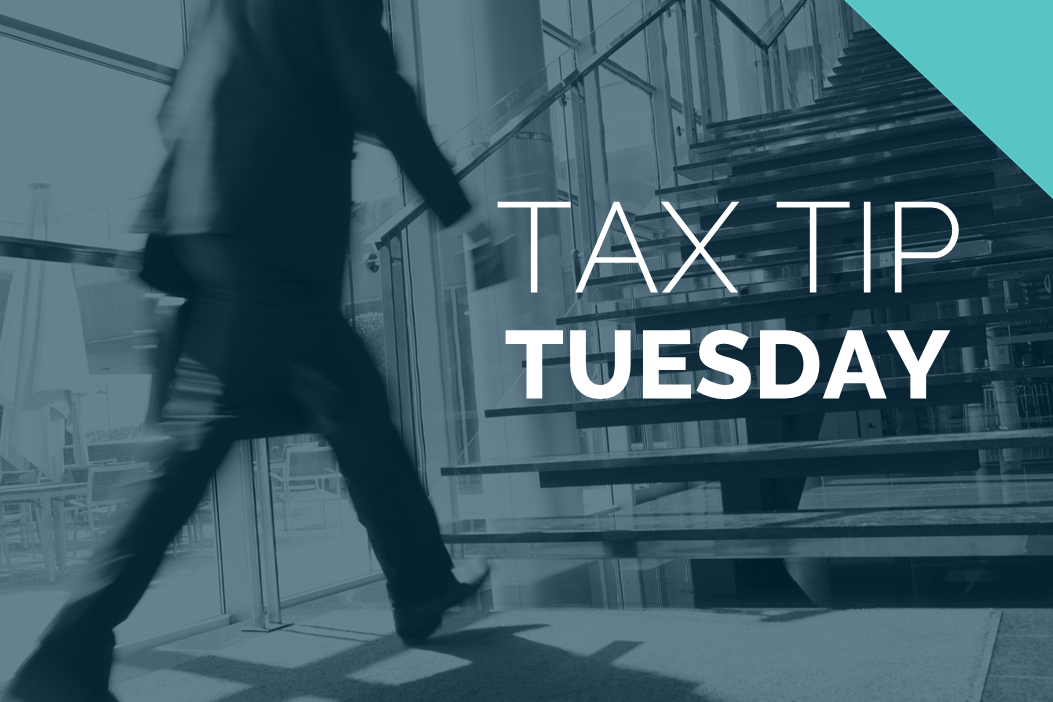Effective May 21, 2023, P&N has joined EisnerAmper. Read the full announcement here.

On March 27, 2020, Congress passed the Coronavirus Aid, Relief, and Economic Security (CARES) Act to provide emergency health care and economic assistance during the COVID-19 global pandemic. This legislation addresses concerns ranging from small business interruption to individual, family, and business economic relief. While the legislation contains a myriad of economic and healthcare response-related provisions, this summary focuses on one aspect of the economic provisions – those provisions for business taxpayers.
Employee Retention Credit
One of the hallmark provisions of the CARES Act legislation with respect to business taxpayers is the creation of an employee retention tax credit for certain eligible employers. Specifically, an eligible employer will be allowed a credit against its applicable employment taxes for a calendar quarter equal to 50 percent of certain qualified wages paid to employees during that quarter. This credit is allowed against social security taxes (i.e., those imposed by either I.R.C. 3111(a) or 3221(a)) and will be reduced by other payroll tax credits allowed, such as Families First Coronavirus Response Act payroll tax credits for paid sick and family leave. If the amount of credit exceeds the quarterly payroll tax liability, such excess amounts will be refunded.
Most importantly, however, if an eligible employer receives a loan under the Paycheck Protection Program, the employer will not be eligible for this credit. This credit will only apply to wages paid after March 12, 2020 and before January 1, 2021.
Who Is Eligible?
Employers will be eligible if they were carrying on a trade or business during the calendar year 2020 and for any calendar quarter:
- the operation of their trade or business was either fully or partially suspended during the calendar quarter due to orders from governmental authorities limiting commerce, travel, or group meetings due to COVID-19; or
- was within a period of significant decline in gross receipts.
In order to determine the period of significant decline in gross receipts, start with the first calendar quarter beginning after December 31, 2019 for which gross receipts are less than 50 percent of gross receipts for the same calendar quarter in the prior year and ending with the calendar quarter following the first quarter in which gross receipts are greater than 80 percent of gross receipts for the same calendar quarter in the prior year.
The following is an example of how to determine a significant decline in gross receipts:
In each quarter of 2019, Business A had gross receipts of $1,000,000. Starting in 2020, Business A’s gross receipts by quarter were as follows:
|
Quarter: |
1Q 2020 |
2Q 2020 |
3Q 2020 |
4Q 2020 |
|
Gross Receipts: |
$450,000 |
$200,000 |
$825,000 |
$900,000 |
In this example, the period of significant decline began in the first quarter of 2020 since gross receipts were less than half what they had been in prior years. The period of significant decline will end in the fourth quarter of 2020 as it is the first quarter after which Business A’s gross receipts were greater than 80 percent of what they had been in that same quarter in the prior year. Wages paid during the first, second, and third quarter will qualify for the credit.
Organizations exempt from tax pursuant to I.R.C. 501(c)(3) can also qualify for this credit if they must fully or partially suspend their business due to governmental orders limiting activity surrounding COVID-19. The test related to significant decline in gross receipts does not apply to such organizations. However, this credit does not apply to the United States government, any State Governments or political subdivisions, nor to any agency or instrumentality of any governmental entity.
Finally, certain employers will be aggregated, such that any person treated as a single employer under I.R.C. 52(a)-(b) or I.R.C. 414(m), (o) will be treated as a single employer for purposes of this payroll tax credit.
What Wages Qualify?
The rules for determining what wages constitute qualified wages depends on 2019 levels of employment. Specifically, if the employer employed more than 100 full-time employees during 2019, eligible wages include wages paid for periods during which the employees are not working either due to governmental restrictions or to significant decline in gross receipts due to COVID-19. For these employers, such wages cannot exceed wages that would have been paid during a 30-day period prior to when the employee was not working. For those employers with 100 or fewer employees, all wages paid during a period of governmental restriction or during a period of significant decline in gross receipts will qualify for the credit. The amount of qualified wages on which the credit is based cannot exceed $10,000 per employee for all quarters.
In addition, qualified wages also include an eligible employer’s qualified health plan expenses that are allocable to such wages. For this purpose, “qualified health plan expenses” means amounts paid or incurred by the employer to provide and maintain a group health plan as long as such amounts are excluded from employees’ gross income. In general, an allocation of such qualified health expenses to wages will be proper as long as it is pro rata among employees and pro rata on the basis of periods of coverage.
Administrative Concerns
The CARES Act also specifically provides that the Secretary of the Internal Revenue Service shall waive any late deposit penalties if such late deposit was due to reasonable anticipation of this credit. In addition, the CARES Act directs the Secretary to issue forms, instructions, regulations, and guidance as necessary to accomplish certain goals, such as:
- To allow for the advance payment of the credit;
- To reconcile any advance payment when the return is actually filed;
- To provide rules for a recapture of this credit for any taxpayer who subsequently receives a PPP loan;
- To provide guidance to third party payors, such as payroll processors, with respect to these credits;
- To provide guidance on how to apply the tests related to a significant decline in gross receipts for employers that were not carrying on such business during the same calendar quarter in 2019.
Delay of Payment of Employer Payroll Taxes and Self-Employment Taxes
The CARES Act also provides that certain payroll taxes due between March 27, 2020 and January 1, 2021 are subject to payment deferral. Specifically, 50 percent of these deferred taxes will be due by December 31, 2021, with the remainder due by December 31, 2022. Taxpayers will be deemed to have timely made all deposits of applicable payroll taxes if they are made by the appropriate date. The covered employment taxes mean the taxes imposed under I.R.C. 3111(a), 3211(a), and 3221(a). There are similar provisions for deferral of payment of 50 percent of self-employment taxes imposed under I.R.C. 1401.
Importantly, however, this provision will not apply to any taxpayer whose had any portion of a Paycheck Protection Program loan forgiven.
Charitable Contributions Deduction Modifications
For corporate taxpayers, the 10 percent limitation on charitable contribution deductions is increased to 25 percent of taxable income. Excess contributions may be carried forward to future years.
These provisions represent a powerful financial tool for businesses to increase cash flow via the use of net operating losses.
Net Operating Losses
In 2018, under the landmark tax legislation known as the Tax Cuts and Jobs Act (TCJA), there were many changes to the use of net operating losses. Specifically, the net operating loss carryback provision was repealed and the use of NOLs during any given year was generally limited to 80 percent of taxable income. The CARES Act reverses some of those changes to provide economic relief in light of the COVID-19 global pandemic. Specifically, the CARES Act repeals the 80 percent taxable income limitation for tax years beginning before January 1, 2021 and also creates a special carryback provision for losses arising in tax years 2018, 2019, and 2020. Under this special provision, any net operating loss arising in those years can be carried back to each of the five taxable years preceding the loss.
Together, these provisions represent a powerful financial tool for businesses to increase cash flow via the use of net operating losses. The CARES Act also provides specific guidance on how to waive the carryback in light of these modifications.
Modification of Minimum Tax Credit
One of the other significant corporate tax changes made by the TCJA was the repeal of the alternative minimum tax (AMT) for corporations. Even though the AMT was repealed, the TCJA provided for use of carryover AMT credits to be refundable for tax years 2018-2021, with any remaining credit 100 percent refundable in tax year 2021. In order to increase cash flow during the COVID-19 crisis, the CARES Act amended this provision such that credits will be fully refundable over the tax years 2018-2019. In addition, the Act provides an election for a taxpayer to take the entire amount of the credit in tax year 2018. In order to receive a refund, a taxpayer may file an application for a tentative refund to utilize the credit in 2018. The application should be filed prior to December 31, 2020 and set forth the amount of the refund claimed, along with information about previous credits claimed for such a tax year. The Secretary of Treasury is then tasked with reviewing the application within 90 days of submission, determining the appropriate amount of credit, and applying such credit or refunding any overpayment.
Modifications to the Business Interest Limitation
In addition to the above changes, the TCJA also limited the amount of business interest certain businesses could deduct. Specifically, for certain taxpayers, the TCJA limited deductible business interest to the sum of business interest income, any floor-plan financing interest, plus 30 percent of adjusted taxable income. The CARES Act provides a special rule for 2018 and 2019 as it relates to the limitation on the business interest deduction. Under these rules, the business interest limitation is increased to 50 percent adjusted taxable income. The Act also provides special rules for partnerships that allow a partner to deduct 50 percent of excess business interest generated in tax years beginning in 2019 in tax year 2020, with the remaining 50 percent subject to the general interest limitation rules. Both corporations and partnerships can elect out of these rules.
Qualified Improvement Property Technical Fix
When the TCJA was passed, a drafting error existed such that a certain type of property, known as Qualified Improvement Property, was not eligible for bonus depreciation. Over the last two years, many taxpayers and tax practitioners have advocated for a correction. The CARES Act contains such a correction retroactive to the effective date of the TCJA. Thus, this property will now be eligible for bonus depreciation treatment.
P&N professionals are closely following the development of COVID-19 relief measures in order to offer insight into the potential impacts on taxpayers. If you have questions about how the CARES Act may affect your business tax situation, please contact your P&N advisor.




